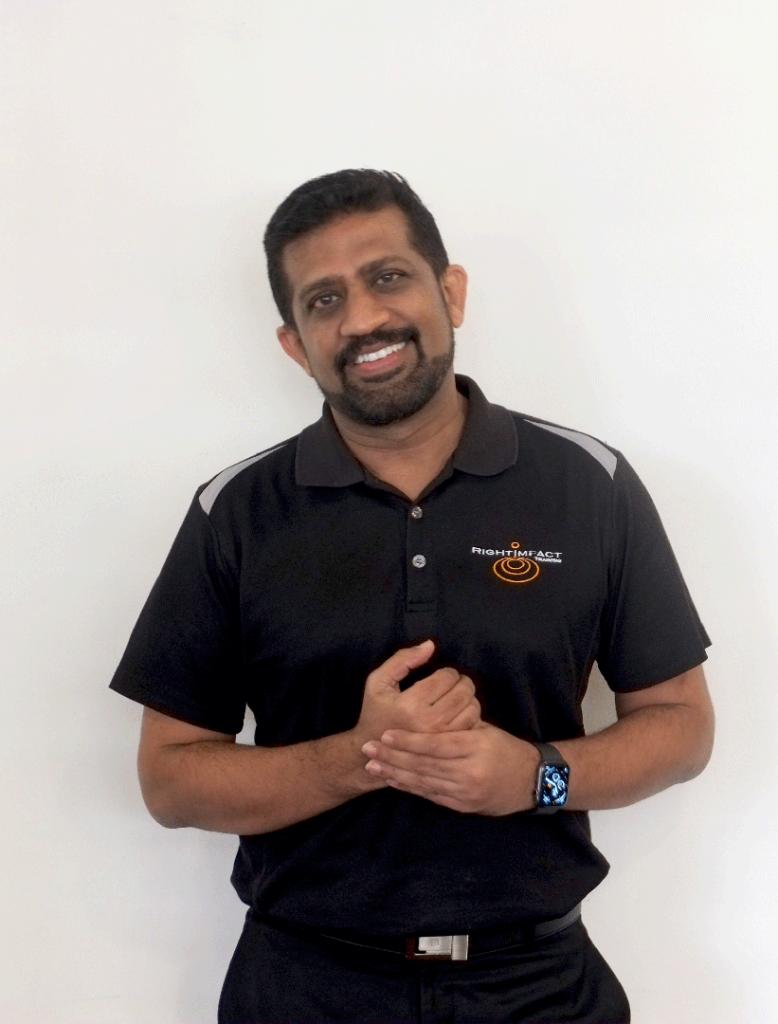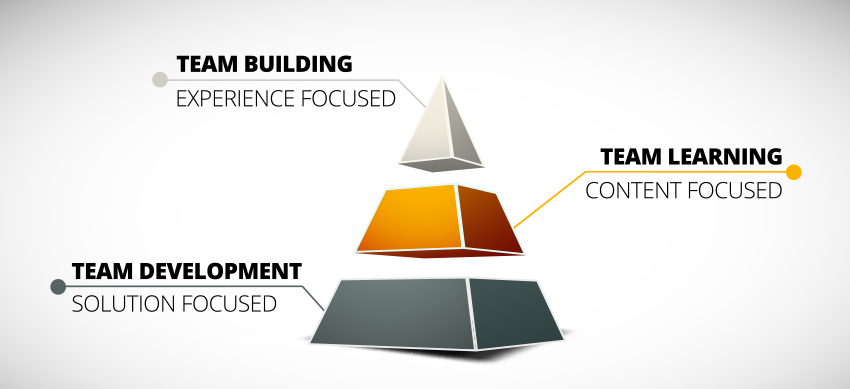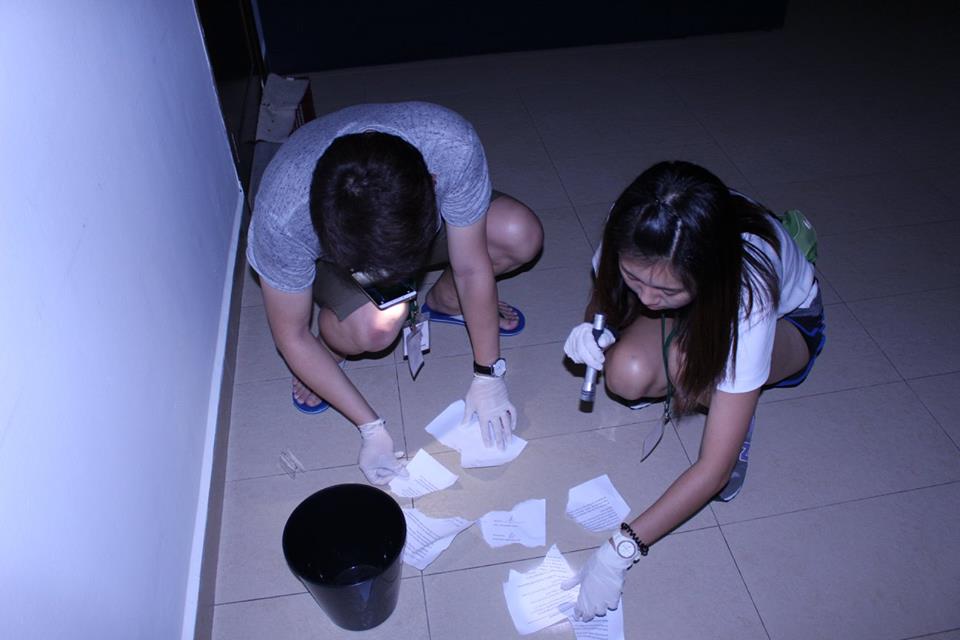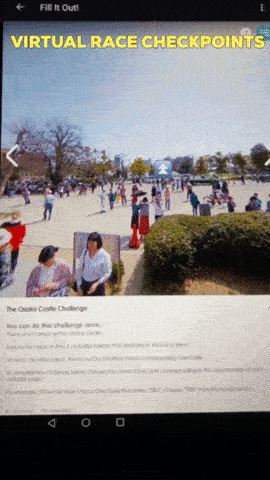Gamification Expert Series: Shan K, Director & Principal Trainer (Right Impact)
by Prapim / February 16, 2021
Welcome to our fourth Gamification Expert Series!
We feature industry experts as they share their knowledge, tips and tricks, and advice on how to gamify programs and projects for a variety of use cases. Our fourth GES features Shan K from Right Impact as he shares how he and his team have been using Gametize to adapt their team-building programs from physical workshops to digital sessions, now that the majority of the workforce has transitioned to working from home.

Shan K is the Director of Sales and a principal trainer of Right Impact, which offers learning & organization development solutions through experiential team building. As a people person, Shan is continuously looking for ways to bring people together and create memorable experiences. Shan’s training career spans over 18 years and he has worked with both youths and adults from various fields.
Right Impact has been looking to expand their digital offerings, having traditionally done in-person engagements. With that, Shan chanced upon Gametize through a product demo by a partner in Malaysia – he instantly saw the vast possibilities Gametize could offer and since then, Shan & the Right Impact team has become one of the early adopters in using Gametize for team-building programs in Singapore.
G: Gametize
S: Shan
S: Shan
How Shan found his calling in training & bringing people together in the workplace
G: Hi Shan, thank you for agreeing to do this interview! Let’s get started – what was the journey for you to start Right Impact?
Shan: Since graduation, I always wanted to do something different from my degree [Editor’s Note: Shan has a degree in Materials Science from the National University of Singapore]. I didn’t know exactly what that “something different” was, so I gave myself a month or two to figure out what I truly wanted to do.
I got that opportunity when a friend asked me to help run a school camp for students, and I found that I loved it! The idea of working with people to teach them how to create a positive and harmonious environment resonated with me. That’s why I decided to go into the training space.
Eventually, I went into corporate training, and was working in a training company. Even though I enjoyed what I was doing, I kept asking myself “What’s next?” I felt there was so much more I could achieve in regards to people development, and that the only way that could be done was to start something on my own and become a decision maker.
I didn’t really have a set plan at first when I left in 2011. I was doing freelance work for a while. That’s when my former colleague, Andy, approached me and asked whether I’d like to work together. The previous director of the company he was working with wanted to go in a different direction, and Andy thought I’d be a perfect fit to help shape the new direction. I came on board and we began the journey to become Right Impact in 2012. And we’ve been running the scene since!

G: Can you tell us more about what Right Impact does?
S: We conduct programs that focus on team development and team-building, and help people who are very different from each other learn how to work together.
There’s a lot of awareness-building, but we also want to instil long-term behavioral change. So, we have a variety of programs such as psychometric assessments, skills-based training, and other activities. We always emphasize that management has to champion these changes and equip participants with the tools to apply their learning outside of our workshops so that over time, their organization can reap the benefits of these behavioral changes.
Of course, we need to be able to practice what we preach at Right Impact. That’s why I value the diversity of working styles and personalities between myself, Andy, and Xinyi [Client Manager at Right Impact]. The three of us are as different as can be with our strengths and ideas, and it’s those differences that allow us to have such a well-rounded, creative approach to building our programs.
G: Thanks for letting us know more about what you do. When did you come across the word “gamification” during your training journey?
S: [Laughs] I’ve been training for 18 years! So in that timeline, in my experience, the word “gamification” and the whole idea of “gamifying something” only really became a buzzword in the last 2-3 years.
Gamification is obviously not just about playing games; it’s about reinforcing a positive behaviour and making it enjoyable.
S: I was seeing so many apps with gamified elements – not just for work, but also for personal life – and I knew of the concept of gamification, but we weren’t sure how to get started even though we really wanted to. It wasn’t until COVID that we had to seriously consider how to go digital and with that, how to gamify our current training programs.
G: I can imagine that was a major pivot. What were the training programs like before you went fully digital?
S: We’re major proponents of experiential learning; we know that people learn best when they have fun. Our physical workshops always focused on achieving the objective through experiential learning, whether it’s about learning about the importance of communication, or trust, or how to work towards a common goal. You pick up and retain learning points better when you go through the experience.
So we’ve designed all our programs in a way to drive experiential learning and be fun, but also building our learning framework into the activity themselves. Participants go through different modules: for example, the first module would be introducing them to the learning framework, then we have a series of activities, and at the end, we do a debrief where participants share how they applied the learning framework during the activities.

S: People have that “a-ha” moment of – “I see why communication is so important now – if we don’t communicate, this is what can happen”, so they learn through that experience.
G: That definitely sounds very engaging. Can you tell us more about the programs that Right Impact offers?
S: We have several programs based on the learning & target behaviors the clients want their participants to instil, and the profile of the group. For example, we have a program called “Around the World in 80 Minutes” where participants can “travel” to different locations to look for hidden items. It’s suitable for most organizations, because it’s more lighthearted; the participants can get together and learn about effective communication in a fun way.

Another one we have is “The Office Escape” which is an escape room activity about overcoming adversity, both as an individual and as a team. We deliberately designed it to be very cerebral – the puzzles and tasks are meant to frustrate you so you need to learn how to keep cool and work together to overcome the obstacles.
[Editor’s Note: You can learn more about Right Impact’s programs in detail here.]
Moving into digital: the challenges of transforming physical workshops into virtual
G: It was around the beginning of 2020 when physical events started getting cancelled in Singapore due to COVID. How did that affect your team?
S: When clients started cancelling their programs with us in February, we thought to ourselves – “This may last for the next 3 months”. We had to start preparing for that. With all the cancellations, we used that time to brainstorm new activities but at the time, we were still creating activities with the idea of them being conducted in-person.
Towards late March, we started thinking “What if this doesn’t just last 3 months? What if this lasts for a year?” We had to prepare for the fact that this might be the situation for the foreseeable future. We wanted to future-proof ourselves, so we started exploring the possibility of building our programs virtually instead.
Naturally, gamification was the solution; in a sense, we were already gamifying learning through our physical workshops because instead of learning through traditional means like presentations or slides, we throw our participants into the experience and let them either succeed or fail. And if they fail, we turn that into a learning point for them to share their experience of why.
The question on our mind was always: “How do we translate all of what we do into a digital, virtual environment?”
G: That sounds like a tough question. How did you get started?
S: We started researching and exploring different platforms. There was a lot of trial & error; most of the platforms we came across were very one-dimensional. They were all designed to do one very specific thing, like creating an “Amazing Race” or scavenger hunt. They were tailored to one very specific use case, but we wanted to branch out beyond just that.
We came across Gametize through one of our partners in Malaysia, Think Codex, who created their own learning modules on Gametize. We were curious and gave the platform a try for ourselves and thought: “This looks interesting, let’s see what else we can do using Gametize.” From there, the first game we created on Gametize was Team CSI.
G: Can you tell us more about Team CSI?
S: Team CSI was an activity for team-building that we already had, but in a physical environment. It’s about group problem-solving, where the participants need to work together to do tasks such as take fingerprints and ask questions, and it’s designed to be more in-depth and cerebral. We took the opportunity to experiment with how to use Gametize to transform the content digitally.
While we were still creating the game, we pitched it to a client and actually sold the program. That’s how confident we were that we could create and deliver our programs using Gametize.


Team CSI is about group problem-solving, and participants work together to investigate the case
Creating a Virtual Team CSI Game from scratch – creativity & perseverance through lots of trial & error
G: I can imagine the reason programs like Team CSI are so engaging is because of the way your trainers utilize physical elements such as the venue, props, and audiovisual cues. How difficult was it to capture that same spirit on a digital platform?
S: Our main challenge was that we didn’t have any reference on how to transform such contents to digital. It was a completely blank slate. For example, for our “Amazing Race” concept, we would have participants moving from point to point to look for clues – but now that you’re sitting at home on your computer or phone, how was that possible?
So instead of wondering, we said “Let’s make this possible”.
That’s when we started exploring different platforms that could be integrated into Gametize. We looked at embedding content to enhance participants’ experiences, such as a 360° map for our “Treasure Hunts” with hidden clues that participants would have to uncover together. Other types of content include certain puzzle creations, and other platforms where we create touch-enabled concepts.

G: That’s very impressive! How did you come up with all these contents?
S: There’s no way around it – it really was a lot of trial and error. I feel we are only as successful as we are because Andy, Xinyi, and I understand how we’re able to contribute our different strengths to each project. I really believe in the strength of our diverse approach; if it had just been one of us, I don’t think we would have had anywhere near the same level of success.
G: Right Impact recently facilitated a fully-online program with 600 people. That’s quite a tremendous feat. How did your team manage that?
S: We use Zoom as our communication tool and Gametize as the content tool, and we have to work with the limitations of each platform. At the end of the day, with a virtual environment, we have to use technology and sometimes there will be technological challenges and limitations that we have to manage accordingly.
So for Zoom, we might start off with a seminar that all participants attend and then after that, they are given instructions to log on to a different Zoom call depending on their assigned cluster. From there, they are further separated into breakout rooms according to their Team. Each Zoom call is managed by a different team of instructors from Right Impact, and they’ll pop in and out of calls to check on how people are doing, provide technical support, and manage the time.
We do also get a lot of questions on how to use Gametize. People have different technical skills and not everyone is tech-savvy. Most of the time, they would’ve already asked their teammates, but we also provide additional support; there’s always a first learning curve in the first 10-15 minutes of using the app, but after that, things move very smoothly.
G: How were Team CSI and your other digital programs received?
S: We got a lot of positive feedback! Initially, people were sceptical because this whole concept of team building virtually was new. They’d say: “How can I have fun when we’re all at home, looking at our laptop or phone?”
And to be fair, we were just as sceptical ourselves. But we decided to give this a try and see what we can do.
When our clients went through our virtual programs, they were surprised. They’d say, “Wow, I didn’t know that it could be done.”
“We were having just as much fun at home in a virtual environment as we were in a physical environment.” In fact, some of them preferred it because they didn’t have to run around and sweat and be in the sun [laughs].


Team CSI and Right Impact’s other digital programs were received positively by clients
G: What do you find engages participants most during your programs?
S: It’s the whole idea of doing things together, and that sense of discovery when they discover something new, whether it’s a task in the activity or learning something new about themselves or their peers.
That feeling is especially important now that there are less opportunities to interact and bond, such as going for lunch or meeting in the office – they don’t get to see each other, and everyone is more siloed and communicating through email.
So, when they do have the opportunity to work together they really, genuinely enjoy it. We get to see the joy of “We solved the crime together!”
G: Currently, some restrictions have eased in Singapore on what activities can be conducted in-person. How does that affect Right Impact’s strategy planning?
S: For now, most of our programs are still virtual. This year, we’re starting to have people ask for in-person workshops, but to be frank, we would still prefer virtual at this point in time [laughs]. After experiencing both physical and virtual programs, we really like going digital. It’s a different feeling. I feel like we’re more efficient because compared to in-person programs, there’s significantly less logistical concerns. Previously, for even a half-day program, we needed a lot of manpower and would have to prepare the day before to pack and unpack equipment. We’d need to bring over 2-3 luggages and need 2-3 hours for setting up the venue and equipment.
Now, we only need to prepare 15 minutes before the program starts. I just open my laptop and I’m ready to go. Our logistics now are just the app and platform, so that has saved up a lot of time. We’re able to dedicate our time to other initiatives.
G: Do you miss physical workshops in any way?
S: I do miss certain aspects for sure. In a physical setting, there’s less limitations on the types of programs I can create because I’m only limited by my imagination whereas for digital, we need to be more creative in how we can work within what the technology we’re using can or can’t do.
For digital programs, there is also more pre-work than physical programs. While there’s much less work to run a digital program on the day itself, we have to put in a lot of pre-work to make that happen, such as research and testing to make sure everything runs well.
That being said, there are many elements of our program that going digital has made easier. For example, the Gametize platform has a leaderboard function, so we can easily see the top teams and reward prizes accordingly. We check with clients on what prizes they want to give out. Nowadays, it’s vouchers (which are easier to distribute online) and announce it during the program.
Looking towards the future: engaging a workforce through digital
G: Sounds like Right Impact is definitely paving the way for digital team-building programs in Singapore. For the future, what else is in the pipeline?
S: We’ve been using Gametize mostly for team-building, but that is only one of our offerings.
We’re still in the exploratory stage of how we can create new activities and use Gametize to solve other HR issues organizations may have. We’re seeing a lot of potential in other areas, such as employee engagement and want to see how we can help organizations engage their workforce digitally through the comfort of the fingertips.

G: What about Gametize – what would you love to see from us to make your game creation experience even better?
S: We’ve been doing really well so far with all the other solutions we’ve embedded onto Gametize, but of course those are paid services and from a cost point, that does add up.
There’s also the consideration of whether those services will incorporate well with Gametize. There’s always a risk things won’t work properly when they are different services rather than from one single source of technology. And because it’s an application within an application, there might be loading or lag issues.
Looking forward, if Gametize could have more of these similar kinds of “game” features then we could streamline our processes, both from a cost and technical performance perspective.
[Editor’s note: Thanks for the suggestion! It’s thanks to feedback from people like Shan that our team understands the kind of features and initiatives to cook up to empower our Admins to further engage their Players. We’ve got something brewing in our labs and can’t wait to share more updates here soon!]
G: To finish off, any words of wisdom for people starting out in gamification or even those who already are familiar with gamification?
S: I think many of us are just at the start of the gamification journey. The potential is huge, but at the same time, it’s a Herculean challenge as people can get distracted easily.
Creation is actually the easy part. The hard part is keeping people engaged constantly and consistently – that is where the gold is.
If you can do that, you’ll find your pot of gold at the end of the rainbow. So, be prepared to do a lot of trial and error. Don’t expect to find the answer just like that. Sometimes, there’s no template and you have to be willing to put in the hard work to keep researching, tweaking, and improving your product.
G: We could not agree more – it’s definitely not easy to be at the forefront of such new initiatives. Any last resources you’d like to share with us?
S: Sure! For those who want to know how we have incorporated Gametize in our activities, you can check out our page at: https://virtualteambuilding.right-impact.com.
About Right Impact
Right Impact is a training company based in Singapore that specializes in delivering quality learning and employee engagement solutions to people, and empowering them so that they can make a positive impact on the people around them, their organizations, their environment, and the world-at-large. Right Impact offers learning and organization development solutions that take a team through team-building to team development.
